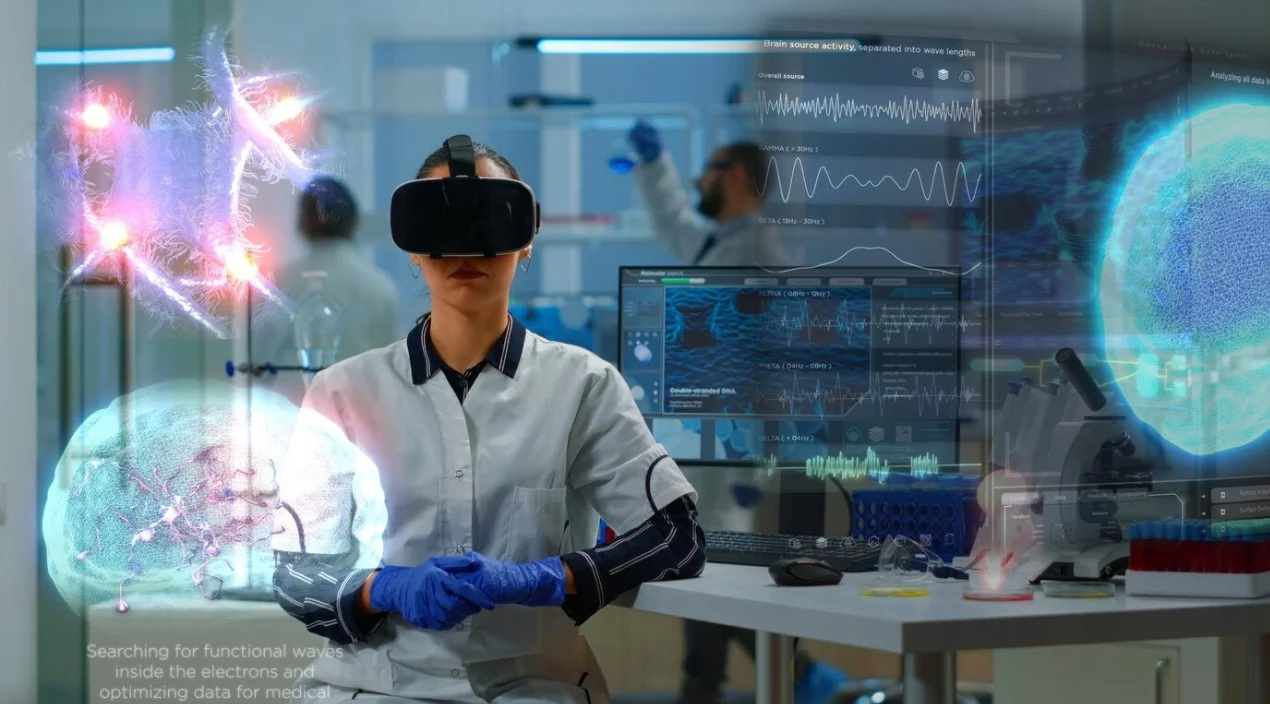In the swiftly evolving landscape of healthcare, the want for modern answers to streamline methods and enhance patient care has never increased. Custom healthcare software program improvement has emerged as a pivotal pressure, empowering healthcare carriers with tailor-made programs designed to fulfill their particular needs. As a developer deeply immersed in this subject, allow me to guide you through the problematic but charming journey of making a custom healthcare software program.
Understanding The Specifics
The custom healthcare software development begins with a comprehensive collection of information about the current situation at the medical enterprise. Developers need to understand the intricacies of Healthcare workflows, regulatory requirements, and the volume needs of healthcare companies. This initial segment involves near collaboration with stakeholders to acquire insights and discover pain factors that the software program objectives to address.
Requirement Analysis
The first step is to behavior a thorough analysis of necessities. We engage with healthcare professionals, directors, and IT professionals to gain a holistic know-how of their desires. This includes figuring out key functionalities, consumer roles, and compliance standards with the purpose of shaping the software's development.
Compliance and Security Measures
Ensuring compliance with healthcare policies including HIPAA (Health Insurance Portability and Accountability Act) is paramount. Developers work diligently to comprise sturdy security measures, safeguarding patient facts and maintaining confidentiality. This includes imposing encryption, access controls, and audit trails to fulfill the very best requirements of information protection.
Designing The Blueprint
Once the requirements are crystal clear, the following phase includes creating an in-depth blueprint for the healthcare software. This blueprint serves as the muse for development, outlining the structure, consumer interface, and ordinary functionality of the utility.
System Architecture
Developers meticulously design the gadget structure, determining how specific components will interact. This includes deciding on the appropriate databases, servers, and frameworks to ensure certain best performance, scalability, and reliability.
User Interface (UI) and User Experience (UX) Design
Creating an intuitive and consumer-pleasant interface is important in healthcare software program improvement. Developers collaborate with UX/UI designers to layout interfaces that facilitate seamless navigation for healthcare specialists. Clear and concise layouts enhance the user revel in, lowering the learning curve for the busy healthcare body of workers.
The Coding Odyssey
With the blueprint in hand, developers embark on the coding odyssey, translating ideas into traces of code that carry the healthcare software program to life. This section involves the use of programming languages, frameworks, and libraries to construct strong, scalable, and green solutions.
Front-cease Development
The front end is what users engage with, and developers focus on creating a visually attractive and responsive interface. Technologies like HTML, CSS, and JavaScript are hired to ensure an easy and engaging consumer experience.
The importance and relevance of front-end development is very difficult to overestimate, since it is these developers who turn your project into reality, which you can see on your devices and interact with it.
Back-cease Development
The returned-cease is the engine that powers the software. Developers use languages like Python, Java, or Node.Js to construct the server-aspect logic, cope with statistics garage, and manipulate verbal exchange between the front-give up and databases.
Backend improvement serves as the engine behind the curtain, powering the capability and common sense that makes applications run easily. Unlike the seen and interactive frontend, the backend is the hidden force handling statistics garage, processing, and making sure seamless communique among the server and the consumer interface. It entails crafting the server aspect of the software, dealing with databases, coping with consumer authentication, and executing the complex algorithms that contribute to the general capability of the software program. A sturdy backend is crucial for creating responsive, scalable, and steady programs, providing the inspiration for a seamless consumer experience at the front end. In essence, backend improvement is the spine that transforms revolutionary ideas into fully functional and dynamic virtual answers.
Integration of Third-Party APIs
To enhance the capability of healthcare software programs, builders often integrate 0.33-celebration APIs (Application Programming Interfaces). This may want to include incorporating lab result systems, billing systems, or digital health record (EHR) systems, developing a unified and interconnected healthcare surrounding.
The integration of 0.33-party APIs (Application Programming Interfaces) is a key side in modern-day software development, permitting packages to leverage outside functionalities seamlessly. APIs act as bridges between one-of-a-kind software structures, allowing them to talk and share records efficiently. Integrating 0.33-celebration APIs streamlines the improvement procedure by tapping into pre-constructed services, saving time and resources. This technique complements the general capability of packages, as developers can include functions like price gateways, mapping services, or social media interactions without reinventing the wheel. However, meticulous attention to compatibility, protection, and proper documentation is essential to ensuring a smooth integration procedure and preserving the integrity of the application's performance. Overall, 0.33-birthday party API integration is an effective device that empowers builders to increase the talents in their programs and deliver superior personal experiences.
Rigorous Testing
Before the software sees the mild of day, it undergoes rigorous trying out to perceive and rectify any problems. Quality warranty is a vital segment, making sure that the software program meets the highest standards of overall performance, protection, and reliability.
Unit testing
With the necessities in hand, we move directly to the coding section. Unit testing turns into our initial line of defense. This procedure involves trying out individual components or gadgets of code in isolation, ensuring every unit's capabilities are as intended. Through a battery of checks, we confirm that the building blocks of the software program meet specifications, figuring out and rectifying any anomalies early in the development cycle.
Integration Testing: Ensuring Harmony Among Components
As the software begins to take form, integration trying out will become pivotal. This segment evaluates the collaboration and interoperability of various modules inside the application. By simulating interactions between those modules, we discover and address potential problems that can arise while components work together. The aim is to make sure seamless conversation and facts go with the flow, fostering a cohesive and incorporated software program solution.
System Testing: Evaluating the Big Picture
System testing takes a holistic approach, examining the whole software program system as a unified entity. This phase assesses the application's compliance with special requirements, capability, overall performance, and safety. We simulate real-world situations to identify any discrepancies or shortcomings, permitting us to best-song the software program to fulfill the stringent standards predicted inside the healthcare area.
Performance Testing: Optimizing for Efficiency
In the healthcare panorama, where every 2nd counts, performance testing is paramount. We meticulously investigate the software's responsiveness, balance, and scalability under varying workloads. By figuring out and addressing capability bottlenecks, we optimize the software for efficiency, ensuring it can take care of the needs of healthcare surroundings without compromising on speed or reliability.
Security Testing: Safeguarding Sensitive Information
Given the touchy nature of healthcare statistics, protection trying out is non-negotiable. We carefully examine the software for vulnerabilities, potential breaches, and information leaks. Through strategies such as penetration trying out and code reviews, we improve the software program against cyber threats, safeguarding affected person information and preserving compliance with healthcare facts safety regulations.
User Acceptance Testing (UAT): Ensuring the User Experience
The final frontier in our testing adventure is testing facial recognition. At this point, the software is placed in the hands of the customers who ordered it—health experts, administrators, and other stakeholders—to ensure that it meets their expectations and desires. Any comments collected at this stage are taken into account, bringing the program to optimal usability and functionality.
Deployment And Implementation
With thorough testing finished, the custom healthcare software program is ready for deployment. This involves carefully transitioning from the improvement surroundings to the stay production environment, making sure of an unbroken launch.
Rollout Strategy
Developers paint with healthcare companies to create a strategic rollout plan. This ought to involve a phased implementation, starting with a pilot institution before expanding to the whole agency.
Training and Support
Training is a critical component of software implementation. Developers provide comprehensive training periods to healthcare personnel, empowering them to make the maximum of the brand-new software. Ongoing help is also offered to deal with any problems and ensure a clean transition.
Continuous Improvement
The journey would not end with deployment; in truth, it marks the beginning of a cycle of non-stop development. Developers actively search for remarks, reveal machine overall performance, and launch updates to deal with evolving needs and rising technology.
Feedback loops
Regular comments from healthcare professionals and users sharing their positive or negative experiences with use are helpful. Developers use this feedback to correct existing errors and inaccuracies, as well as improve the functionality of the software.
Adopting Emerging Technologies
As technology evolves, so does healthcare software. Developers stay abreast of emerging technologies consisting of artificial intelligence, gadget getting to know, and blockchain, exploring ways to integrate these innovations to further beautify the abilities of healthcare answers.
Conclusion
Custom healthcare software improvement is a multifaceted system that requires a deep know-how of each healthcare and era. As a developer in this area, the goal is not simply to create software program however to revolutionize the way healthcare is delivered. By embracing the demanding situations and complexities of healthcare, builders make contributions to constructing a future wherein era plays a pivotal function in improving patient consequences and healthcare efficiency.
Read More: Role of Robotics in Healthcare: Top Pros and Cons








